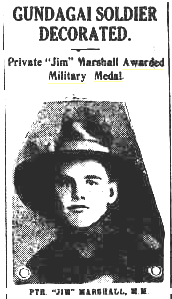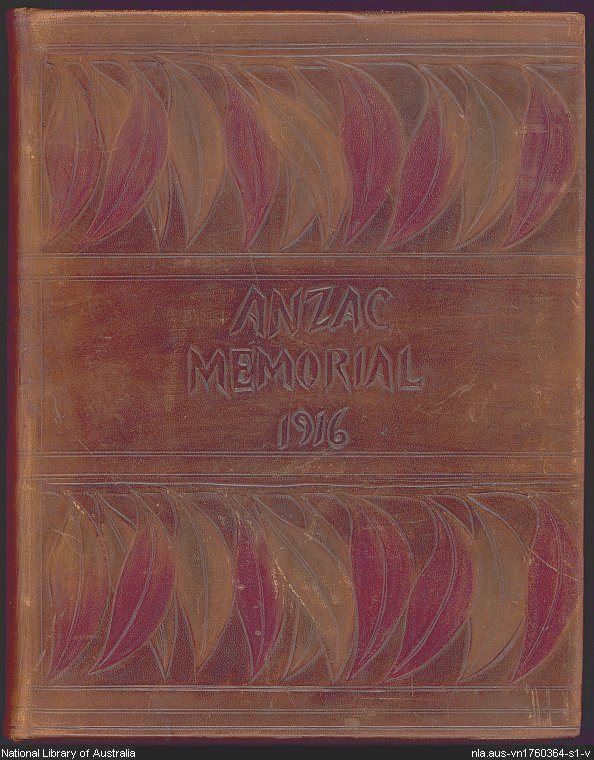A number of databases containing biographical information relating to Australians and others who fought in the First World War are available at the National Library. These include Ancestry and FindmyPast which can be accessed onsite at the National Library. Search our eResources service for others.
BIOGRAPHICAL DATABASES
RELATED WEBSITES
The National Archives of Australia holds the records of service of members of the Australian defence forces in the First World War. A useful guide to these records is available on their website.
The Australian War Memorial provides access to the WWI Nominal Roll, WWI Embarkation Roll and the WWI Roll of Honour as well as other useful biographical resources.
FINDING A SOLDIER'S GRAVE
The Commonwealth War Graves Commission cares for the graves of those soldiers of the Commonwealth who died in World War I. Their website allows searching of individual soldiers' graves across the more than 23,000 memorials and cemeteries they care for.
The War Graves Photographic Project provides photographs of war graves or memorials.
OTHER LIBRARY GUIDES
Australians in World War I is a detailed guide to researching individual soldiers, created by the the State Library of Victoria.
The National Library of Australia's Biography research guide is a general guide to finding biographical information.
If you are looking for a soldier there are many published resources at the National Library to assist. Official records relating to individual soldiers are available at the National Archives of Australia and the Australian War Memorial.
Catalogue search tips
To find biographies of individual soldiers, use the name of the soldier as a catalogue keyword search, for example:
There are also many collective biographies available, including of soldiers from the same area. Use the geographic area or the more general name of the conflict as in the following examples:
- Soldiers -- New South Wales -- Bungendore -- Biography
- World War, 1914-1918 -- Participation, Australian -- Biography
Many volumes of the collected letters of both individual soldiers and soldiers from particular areas have also been published. These can be found by using either individual names, or geographic areas:
'How to' guides
There have been a number of guides published to tracing individual soldiers. The following are on open access in the Newspapers and Microforms Reading Room.
- Digging for diggers: a guide to researching an Australian soldier of the Great War, 1914-1918
Call number RX 929.1072 H826 - That elusive digger: tracing your Australian military ancestors
Call number RX 940.394 S655
Unit histories and official diaries
Unit histories and official diaries can provide useful information on the movement of a unit and a soldier within that unit.
- AIF unit histories of the Great War of 1914-1918 is a recently published bibliography of unit histories.
There are also growing collections of unit histories available online. The State Library of Victoria is progressively digitising Victorian unit histories in its collection. The Australian War Memorial has a very useful guide called Researching the history of a unit and is progressively digitising its collection of Australian Imperial Force WWI diaries.
Medals and awards
Many soldiers received awards for their bravery and service in the war.
The London gazette contains of names of Australians who were granted honours and awards in the First World War and is available online.
The Australian War Memorial has a useful guide called Researching a person which outlines how to find details of honours and awards presented to Australians while on active service with Australian forces. It also includes references where the recommendation and award can be found in the Commonwealth of Australia Gazette as well as the London gazette.
The following printed works name Australian Army recipients of gallantry and distinguished service awards made during the First World War, together with the recommendations for the awards:
A useful case study on finding a military honour or award in the Commonwealth of Australia Gazette can be found in our Research Guide: Government gazettes.
To find out what awards have been issued from the Australian and Imperial honours and awards systems from the Boer War to the present day check Defence Honours and Awards.
Soldier settlers
On their return from war, many soldiers leased farming land and became soldier settlers.
To find published works held by the National Library use the keywords ‘soldier settlers’ or search by subject in the catalogue. Useful subject headings include:
- Soldier settlements -- [name of state/location], for example, Soldier settlements -- Queensland
- War Service Land Settlement Scheme (Australia)
The following websites also contain useful information on the scheme and access to records:
Stephens, A. G. & Donald, Will. & Returned Soldiers Association of New South Wales. & Returned Sailors' and Soldiers' Imperial League of Australia. 1916, Anzac memorial / [ed. by A. G. Stephens for] the Returned Soldiers Association Returned Soldiers Association Sydney.
The ANZAC memorial was compiled to commemorate those soldiers who fought and died in the Great War. Various editions were published in different states. It includes photographs of those soldiers killed, a roll of honour, accounts of action undertaken and soldiers stories.
AUSTRALIAN NEWSPAPERS

GUNDAGAI SOLDIER DECORATED. (1918, December 31). The Gundagai Times and Tumut, Adelong and Murrumbidgee District Advertiser (NSW : 1868 - 1931), p. 2. http://nla.gov.au/nla.news-article130752258
Newspapers can provide a rich source of biographical information. Many Australian national, regional and local newspapers are available online on Trove. Other Australian and overseas newspapers from this period may be held at the National Library in print or microform. Check the online catalogue.
Biographical information contained in newspapers can include photographs, details of military actions undertaken and medals awarded.
